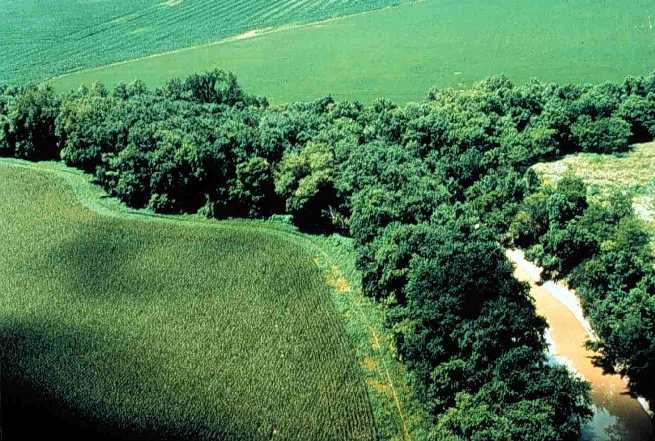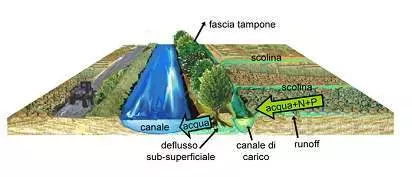Buffer strips and wooden buffer zones
Buffer strips and wooden buffer zones are nature-based solutions to remove pollutants from agricultural runoff. They are principally used to remove nitrogen loads reaching the river due to fertilizers application in agricultural fields. If properly designed, these systems are also able to remove phosphorous and pesticides.
IRIDRA participated in different studies regarding the reduction of agricultural pollution using buffer strips and wooden buffer zones. Therefore, IRIDRA can offer consulting services for the planning, design, and pollutant removal monitoring of these systems.

Conventional linear buffer strips

Buffer strip for treatment of sub-superficiale agricultural runoff (Source: courtesy B.Boz)
Buffer strip with herbaceous strip

Buffer strip enriched with herbaceous strip to improve the phosporous removal of agricultural runoff (Source: courtesy B.Boz)
Buffer strips plus nature-based channel

Buffer strips plus nature-based channel for improvement of nutrient removal from agricultural runoff (Source: courtesy B.Boz)
Wooden buffer zones

Areal view on the treatment plant of Enköping (Sweden): conventional treatment plant plus detention basins; the treated wastewater is used to irrigate a wooden zone, which produces biomass for energy generation. The entire system is able to cover the 50% of energy demand of the Enköping settlement. Source: “Varmeverket”, modified.

